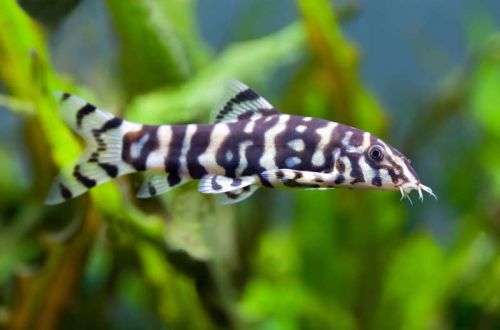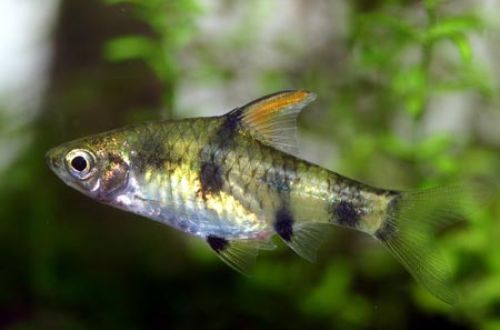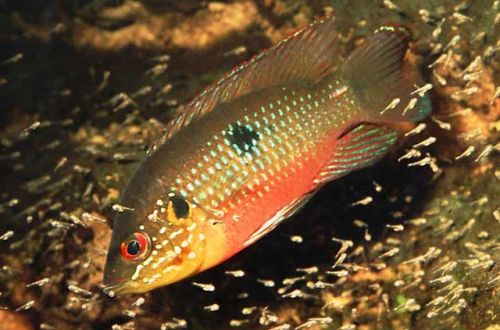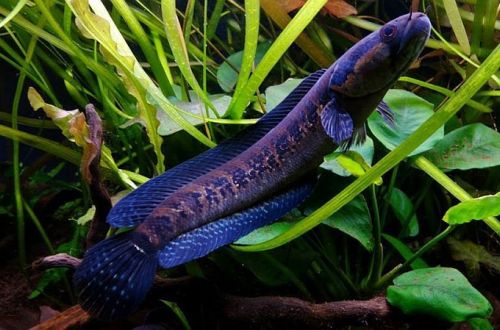
African snakehead
The African snakehead, scientific name Parachanna africana, belongs to the family Channidae (Snakeheads). The fish comes from subequatorial Africa, where it is found in Benin, Nigeria and Cameroon. Inhabits the lower basin of river systems that carry their waters to the Gulf of Guinea, and numerous tropical swamps.

Description
Adult individuals reach a length of up to 30 cm. The fish has an elongated body and large extended fins. The coloration is light gray with a pattern of 8–11 marks resembling chevrons in shape. In the mating season, the color becomes darker, the pattern is barely noticeable. The fins may take on a blue tint.
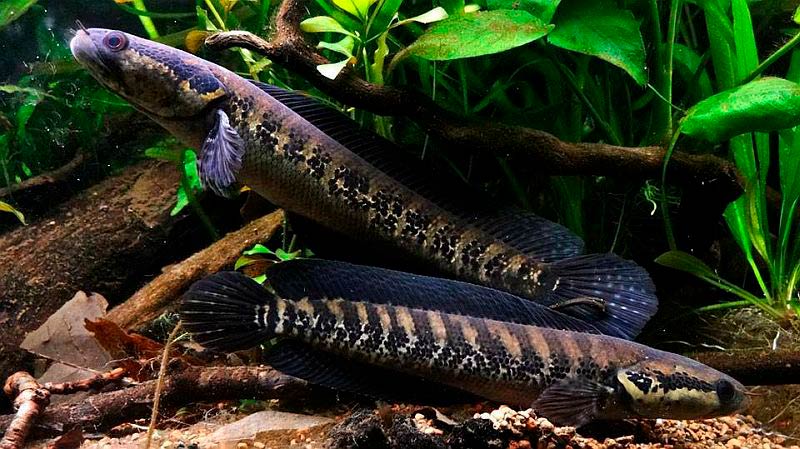
Like the rest of the family, the African snakehead is able to breathe atmospheric air, which helps it survive in a swampy environment with a low oxygen content. Moreover, fish can do without water for some time and even move short distances on land between water bodies.
Behavior and Compatibility
Predatory, but not aggressive. Gets along with other fish, provided that they are large enough and will not be perceived as food. However, cases of attacks are possible, so a species aquarium is recommended.
At a young age, they are often found in groups, but upon reaching puberty they prefer a solitary lifestyle, or in a formed male / female pair.
Brief information:
- The volume of the aquarium – from 400 liters.
- Water and air temperature – 20-25°C
- Value pH — 5.0–7.5
- Water hardness – 3–15 dGH
- Substrate type – any soft dark
- Lighting – subdued
- Brackish water – no
- Water movement – little or no
- The size of the fish is about 30 cm.
- Nutrition – live or fresh/frozen food
- Temperament – inhospitable
Maintenance and care, arrangement of the aquarium
The optimal tank volumes for one adult fish start from 400 liters. The African Snakehead prefers a dimly lit aquarium with a layer of floating vegetation and natural snags on the bottom.
Can crawl out of the aquarium. For this reason, a cover or the like is necessary. Since the fish breathes air, it is important to leave air space between the lid and the surface of the water.
It is considered a hardy species, able to withstand significant habitat changes and live in conditions unsuitable for most other fish. However, it is not worth running an aquarium and artificially worsening the conditions of detention. For the aquarist, this should only testify to the unpretentiousness and relative simplicity in caring for the Snakehead.
Aquarium maintenance is standard and comes down to regular procedures for replacing part of the water with fresh water, removing organic waste and equipment maintenance.
Food
Predatory species that hunts from ambush. In nature, it feeds on small fish, amphibians and various invertebrates. In the aquarium, it can be accustomed to alternative products: fresh or frozen pieces of fish meat, shrimp, mussels, large earthworms, etc.
Source: FishBase, Wikipedia, SeriouslyFish



